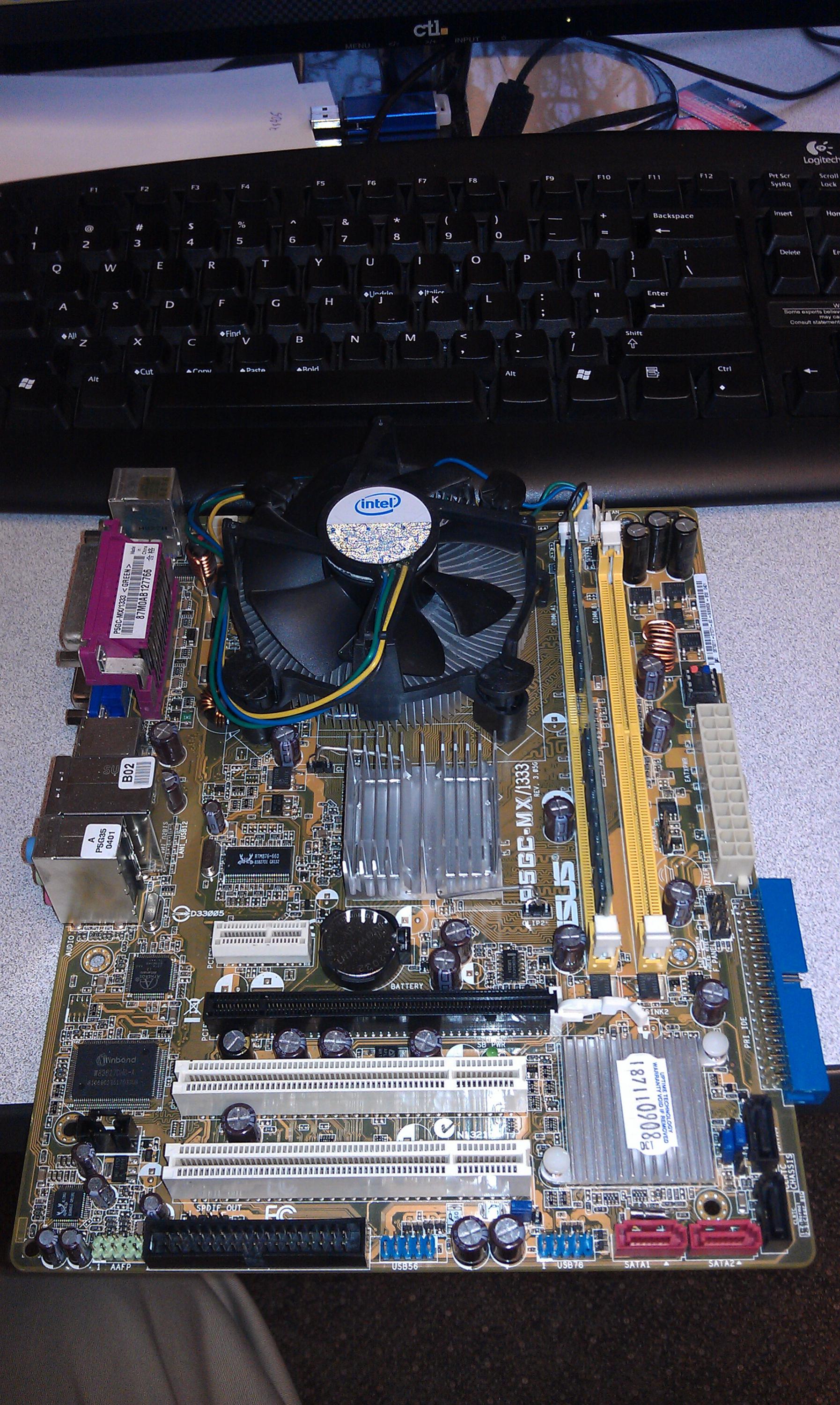Okay I have a couple questions.
Is there a way to tell if TK caps are resleeved OST, or ones that were actually made in Japan? I'm curious because this Asus P5GC-MX/1333 motherboard has all TK caps except on the VRM + a few pannies by the RAM. The system has 44,165 running hours on it (It was used to scrub mail 24/7) and none of the TK caps are bulged. The PSU feeding it had bad caps on the 12V rail, and the 3.3V rail. The failing Rubycon cap on the 5VSB also read 0.62Ω (Keep in mind this PSU was manufactured in Feb, 2000) So I guess these were sourced from Japan, or maybe got lucky? Since this PSU has been in use since 2000, and this board was installed in 2008, I have no idea when those JPCE-TUR caps bulged, it could have been the entire time! Since the caps on the 5V rail were just fine (Still tested 0.03Ω) this is the only rail that would have had clean ripple the entire time of use. There's 17 TK caps and they're all 820uF 6.3V, which leads me to my next question:
When a motherboard, such as this one is being used with a power supply with bad capacitors, clearly the PSU will create lots of ripple. So with all this ripple going into the motherboard, are the capacitors the only thing that are seriously stressed by the ripple? Or does this damage the chipset as well? I ask because this thing already has 44,000 hours on it so if the ripple has damaged more than the caps, I don't know if I want to spend the time, or caps (assuming those TK's are resleeved OST)

Appreciate any replies or input
Is there a way to tell if TK caps are resleeved OST, or ones that were actually made in Japan? I'm curious because this Asus P5GC-MX/1333 motherboard has all TK caps except on the VRM + a few pannies by the RAM. The system has 44,165 running hours on it (It was used to scrub mail 24/7) and none of the TK caps are bulged. The PSU feeding it had bad caps on the 12V rail, and the 3.3V rail. The failing Rubycon cap on the 5VSB also read 0.62Ω (Keep in mind this PSU was manufactured in Feb, 2000) So I guess these were sourced from Japan, or maybe got lucky? Since this PSU has been in use since 2000, and this board was installed in 2008, I have no idea when those JPCE-TUR caps bulged, it could have been the entire time! Since the caps on the 5V rail were just fine (Still tested 0.03Ω) this is the only rail that would have had clean ripple the entire time of use. There's 17 TK caps and they're all 820uF 6.3V, which leads me to my next question:
When a motherboard, such as this one is being used with a power supply with bad capacitors, clearly the PSU will create lots of ripple. So with all this ripple going into the motherboard, are the capacitors the only thing that are seriously stressed by the ripple? Or does this damage the chipset as well? I ask because this thing already has 44,000 hours on it so if the ripple has damaged more than the caps, I don't know if I want to spend the time, or caps (assuming those TK's are resleeved OST)
Appreciate any replies or input

Comment